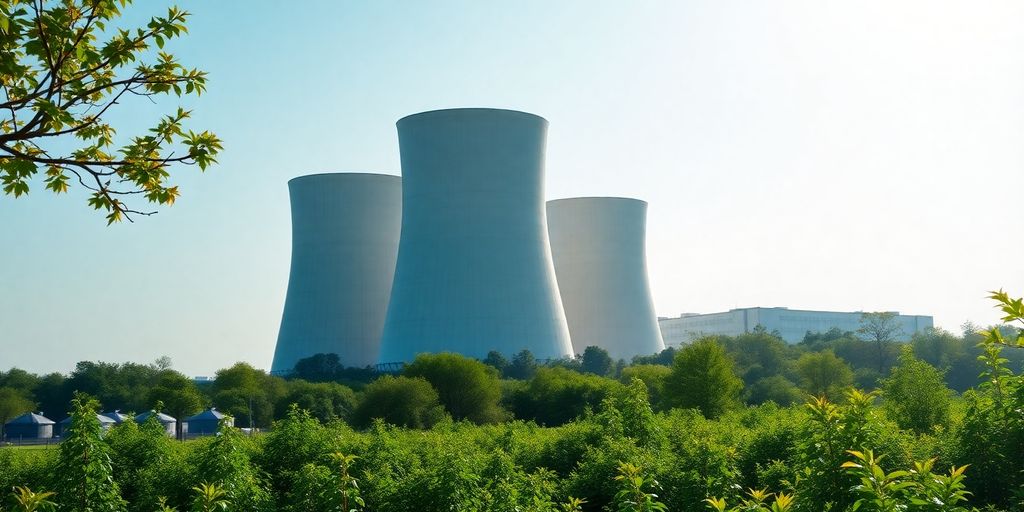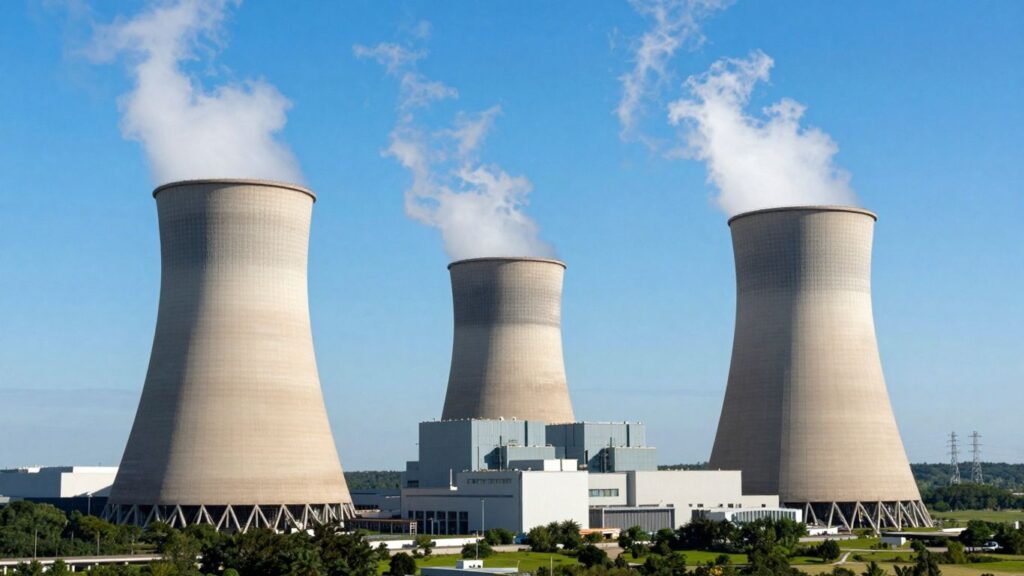Nuclear energy is experiencing a resurgence in interest, driven by a dual focus on decarbonization and energy security. Global events, particularly geopolitical tensions impacting energy supplies, have accelerated the reevaluation of nuclear power as a reliable and clean energy source. Policy shifts and technological advancements are further bolstering its position in the global energy transition.
Key Takeaways
- Nuclear power is increasingly viewed as a climate change solution, supported by policies like the U.S. Inflation Reduction Act and its classification as a "transition activity" under the EU Green Taxonomy.
- Europe’s energy crisis is prompting countries to consider uranium stockpiling for backup power, potentially reshaping the uranium enrichment market.
- The nuclear industry has made significant strides in safely managing nuclear waste through proven transport, storage, and disposal methods.
- While general mining sector costs may rise due to inflation, the uranium industry benefits from hedged operational expenses and long-term contracts, offering cost stability.
Green Energy Transition Readying for a Nuclear Boost
The global push for net-zero emissions is spotlighting nuclear power’s potential. The International Energy Agency suggests the nuclear sector must double in size over the next two decades to meet these goals. In the U.S., the Inflation Reduction Act is expected to stimulate investment in the uranium sector through production tax credits for existing nuclear generators and technology-neutral credits that level the playing field for advanced nuclear energy. The act also allocates significant funding for the High-Assay Low-Enriched Uranium (HALEU) program, crucial for developing smaller, more efficient advanced reactors.
In Europe, nuclear energy’s classification as a "transition activity" under the EU Green Taxonomy aims to boost investor confidence. This classification, effective from January 2023, includes advancements in Generation IV reactors designed to minimize waste and enhance security.
Europe’s Energy Crisis Makes Energy Security a Priority
Concerns over Russian gas supply disruptions have intensified Europe’s focus on energy security. Nuclear power is emerging as a key clean energy alternative to enhance energy independence. The ability to store uranium as a strategic reserve provides an additional layer of energy security. France, a long-time proponent of nuclear energy, leads EU uranium demand, underscoring the continent’s reliance on this power source. Global uranium supply chains are being re-examined, with potential sanctions on Russian uranium imports and the risk of Russia halting exports prompting a move to reduce reliance on Russian nuclear fuel.
The Asia-Pacific Region Is Essential to the Nuclear Industry’s Growth
The Asia-Pacific region is poised for significant growth in nuclear power. Countries like Japan, China, and South Korea are expanding their nuclear programs to meet climate targets and enhance energy security. Japan aims to re-establish nuclear power as a significant part of its energy mix, while China has an ambitious plan to construct numerous new reactors, potentially making it the world’s largest nuclear power producer.
Uranium Enrichment Is Key to Getting the Ball Rolling
Enriched uranium is essential for nuclear power generation. The enrichment market, historically stable, could see changes with increased demand. Companies like Urenco are planning reinvestments in plant capacity, and potential bans on Russian enriched uranium could lead other facilities to ramp up production.
Structural Risks: Nuclear Waste
While nuclear waste is a concern, the industry has developed robust methods for its management. Spent nuclear fuel is stored underwater for cooling before being transferred to dry casks for long-term storage. The volume of nuclear waste is significantly less than that produced by other thermal power sources, and advancements are being made to further restrict waste from advanced reactors.
Contingent Risks: Cost Inflation
While inflation may impact the broader mining sector, the uranium industry is somewhat insulated. Long-term contracts with utilities, often including inflation-escalation clauses, provide price stability. Furthermore, the cost-effectiveness of In Situ Leach (ISL) mining and ongoing investments in technology help control operational costs.
Investing in Uranium and Nuclear Components
For investors, exchange-traded funds (ETFs) focused on the uranium industry offer a way to gain exposure to this sector, mitigating liquidity issues and rolling costs associated with futures contracts. The Global X Uranium ETF (URA) provides diversified access to companies involved in uranium mining and nuclear component manufacturing.
Conclusion: Nuclear Power Gaining Favor
The confluence of energy crises and the imperative for energy security is driving a global reassessment of energy supply chains. Nuclear power, with its high energy output and cleaner profile compared to fossil fuels, is increasingly recognized as a critical component of the future energy mix. The growing interest in uranium and nuclear power across many nations signals a significant shift in global energy strategies.












